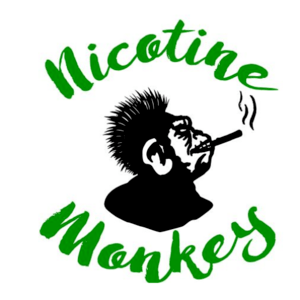 The scholarly journal with the curious name of Tobacco Control, on the cover of the May 2017 issue shows a picture of an inflated balloon with a map of the world on it about to be burst by a lighted cigarette. The wording is ‘Tobacco threatens us all’ and ‘Say No to Tobacco’, among other slogans.
The scholarly journal with the curious name of Tobacco Control, on the cover of the May 2017 issue shows a picture of an inflated balloon with a map of the world on it about to be burst by a lighted cigarette. The wording is ‘Tobacco threatens us all’ and ‘Say No to Tobacco’, among other slogans.
The dire situation of tobacco threatening us all is elaborated in the leading editorial:
…tobacco use is not merely a threat to individual health…[it] is associated with increased poverty and food insecurity…land formerly used to grow food crops is converted to tobacco growing…tobacco continues to be produced using child labour in unsafe conditions…tobacco is an environmentally destructive industry. In addition to deforestation for tobacco growing and curing, heavy use of pesticides contributes to water and soil pollution…the potential negative effects of leachate from billions of discarded cigarette butts on marine life.
Depressing reading. But in the last sentence they come to the point:
Eliminating the tobacco threat by implementing tobacco control measures…
Just a minute. How can you eliminate the tobacco threat by tobacco control measures? The only way you can eliminate the tobacco threat is by eliminating tobacco.
If tobacco is merely controlled, as opposed to being eliminated or abolished, it implies that there are some circumstances or situations where tobacco use in some form or other is legitimate or acceptable. And what circumstances or situations would those be? This is a continuation of the discussion of the problem of ‘regulating’ nicotine products mentioned in my post of 20 May 2017, https://www.nicotinemonkey.com/vaping-forever
The regulation/prohibition problem can also be considered from the perspective of a group of parents afflicted by the loss of a child through drug use. Understandably, they want to do something to prevent further deaths from this cause (BMJ 2017;357:j1876). Two such parents ‘blame their daughters’ deaths not on the illegal substances that they had taken but on the laws that did nothing to save them’ and ‘[They want] not only just to decriminalise the taking of heroin, cocaine and cannabis but also to regulate their supply.’ One of these mothers says of her daughter, ‘She wanted to get high, but she didn’t want to die.’
There is no safe way of taking addictive drugs – it’s a contradiction in terms. And why, I wonder, would a teenager want to ‘get high’ anyway? The best ‘high’ one can possibly have is the experience of normal good mental and physical health – with one’s mind unclouded by chemical poisoning of the brain. No amount of regulation of addictive drugs will make them safe to use, nor will it significantly reduce the number of users within a reasonable time.
To see this in proportion, in Britain in 2015 there were nearly 2,500 deaths from illegal drugs; the number of tobacco-related deaths per year is 96,000.
The same confused thinking is evident in the debate about tobacco – I promise I am not making this up:
[Smoking is] a severe psychiatric disease that can only be solved by a complex, multi modular, and individual treatment including consideration of socioeconomic status/factors.
Thus sayeth Dr Detlef Degner, a psychiatrist at the University of Göttingen in Germany. This extraordinary statement appeared in The British Medical Journal (25 May 2017) as a comment on an editorial about the advent of standardised cigarette packaging in Britain. The editorial that gave rise to this comment is headed ‘Standardised packaging for cigarettes’ and has the Oh-so-clever subtitle, ‘Undressing a pack of wolves in sheep’s clothing’.
The writer, one Professor Joanna Cohen, is affiliated with the Institute for Global Tobacco Control whose mission is ‘to prevent death and disease from tobacco products’. So far so good. But the Institute proposes to do this ‘by generating evidence to support effective tobacco control interventions’, as their website turgidly puts it.
After reminding us that ‘Tobacco industry products are responsible for six million deaths every year’, Professor Cohen laments that ‘There is no magic bullet to end the tobacco epidemic.’
But there is! The notion of tobacco control is based on the premise that tobacco is here to stay. Herein lies the problem. Allow me to repeat: you cannot prevent death and disease from tobacco products by controlling them; they need to be abolished.
A further contradiction is evident by Professor Cohen saying in her editorial, ‘Tolerating attractive packaging of a deadly product is indefensible.’ Indeed, but it defensible to tolerate the selling in any form of a deadly product?
As she points out, Big Tobacco are not merely going to stand by and do nothing while tobacco control measures are introduced; they do everything they can to delay and obstruct them. And even if all current tobacco control measures were instituted tomorrow, there would still be left a substantial number of smokers for decades to come.
Why is there so little mention of tobacco abolition? Because it would drive smoking underground? Maybe it would but then there would be vastly fewer smokers. Because governments would lose revenue? Apart from huge savings in health costs from abolishing tobacco, governments have never lacked ingenuity in devising new ways of taxation.
It is not as if there is anything new in this. Readers of my blog will be well aware that I have called repeatedly for tobacco to be banned as the only realistic way to stop the smoking epidemic.
In order to bring this about the first step is for smoking to be seen for what it is: legalised drug addiction.
Text © Gabriel Symonds

Leave A Comment